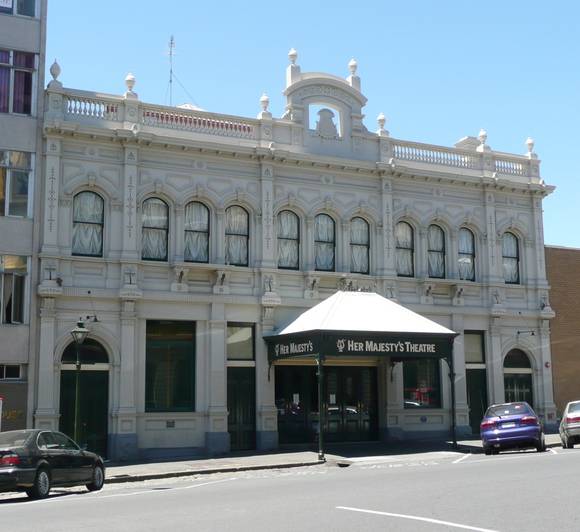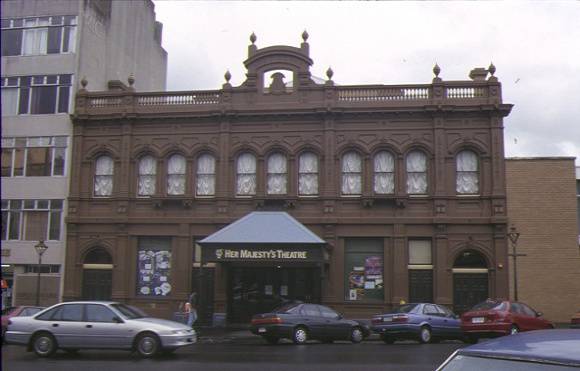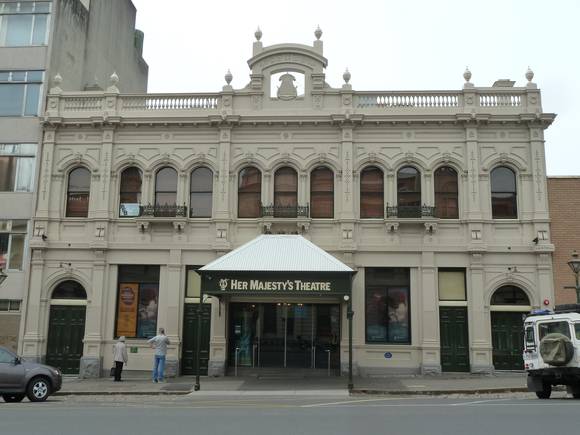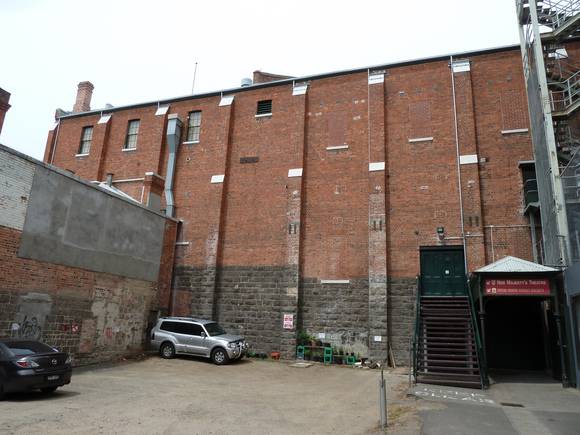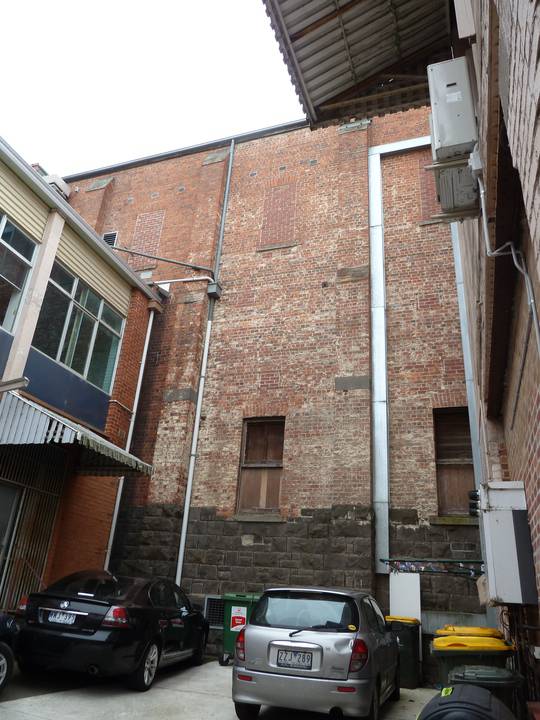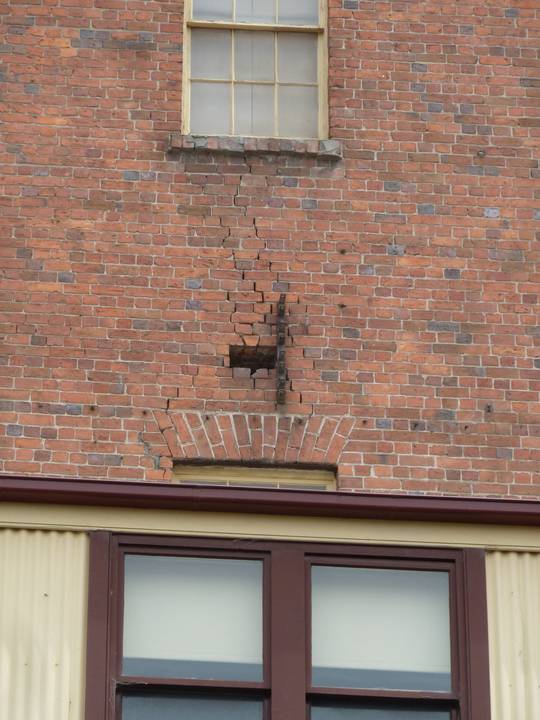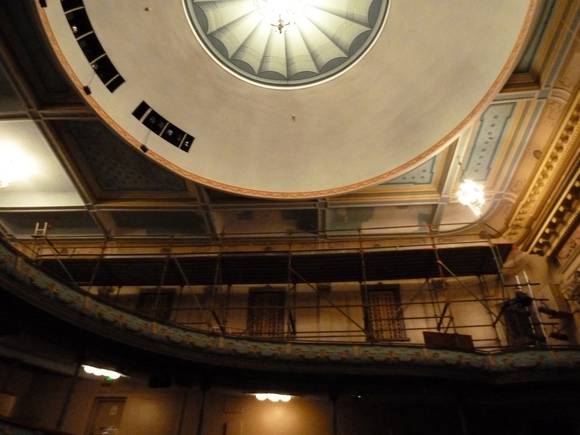| Back to search results » | Back to search page » |
|
HER MAJESTY'S THEATRE
Other NamesACADEMY OF MUSIC , ROYAL SOUTH STREET MEMORIAL THEATRE Location17 LYDIARD STREET SOUTH BALLARAT CENTRAL, BALLARAT CITY
File Number604232LevelRegistered |
|
Statement of Significance
This building, which was known in 1874 as the Academy of Music, in
1898 as Her Majesty's Theatre, and, from 1966 to 1988 as the South
Street Memorial Theatre, has both historical and architectural
significance. It is a rare survivor of a number of Ballarat and
Bendigo theatres which, in the 19th century, rivalled those in
Australia's capital cities. The Ballarat theatre is arguably the
oldest operating theatre in Australia. According to Ross Thorne, a
major exponent of our theatrical history, the memorial theatre is
"probably the most significant theatre in Australia today".
Thorne claims that it is the most substantially intact of our
remaining 19th century theatres, which include the Theatre Royal in
Hobart, the Princess in Melbourne and Her Majesty's in Brisbane. On a Victoria-wide basis, the Ballarat theatre has special importance
for its unique interior. Its double horse-shoe shaped balconies
supported on columns, added from the designs of the notable architect
William Pitt in 1898, are the last example of this type of theatre
design in the State. The theatre has significance because of its
associations with two distinguished 19th century architects, George
Browne and William Pitt, both of whom specialised in the design of
theatres. Browne, who was responsible for the original 1874 design of
the Academy of Music, also designed Melbourne's rebuilt Theatre Royal
in 1872. He was the designing architect in 1874 of Rupertswood, the
Sunbury mansion of Sir William J Clarke, Patron of the Academy of
Music. Pitt, who designed the 1898 alterations and additions, included
among his theatrical works the new Princess Theatre in 1886, the Bijou
(rebuilt after the fire of 1889), the 1891 design of the Melbourne
Opera House and its rebuilding in 1901 (later known as the Tivoli),
alterations to the interior of the Theatre Royal in Bourke Street in
1904 and alterations to the interior of the Hobart Theatre Royal in
1911. Also, at the turn of the century, Pitt was responsible for
extensive alterations to Her Majesty's Theatre in Melbourne. Other
major buildings designed by Pitt include the Rialto and the Olderfleet
in Collins Street and the St Kilda Town Hall. The Theatre is a building which illustrates important aspects of the
social and cultural life of Ballarat over a period of more than 100
years. It has importance for its links with Sir William J. Clarke
(1831-1897), the landowner, stud breeder and philanthropist for whom
it was built in 1874, and with a number of Ballarat's leading
citizens, most notably William Collard Smith (1830-1894), agent,
investor and politician. It is important for its associations from
1896 with the prestigious Royal South Street Society, a Ballarat
organisation dedicated to the promotion of excellence in the
performing arts. This society owned the building from 1965. The
theatre is associated also with the Sun Aria competitions, which
resulted in the discovery of many important Australian singers.
Notable theatrical figures who performed at the theatre included the
company of William Lyster, who is remembered for his part in
establishing opera as a permanent institution in Victoria; Amy
Castles, dramatic soprano; Dame Nellie Melba and Gladys Moncrieff. The building has landmark value. The original 1874 Lydiard Street
facade, which survives partially intact, provides a contributory
element to the Lydiard Street precinct. The rear three-storey brick
section has a strong visual element and closes the vista along Lewis Street.
Group
Recreation and Entertainment
Category
Theatre


